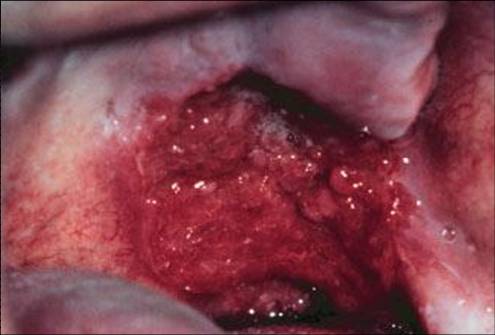Campaign increases mouth and throat cancer screenings among low-income rural Floridians
Raising awareness of the dangers of mouth and throat cancer increased the number of black men in some of Florida’s poorest counties who sought screening for the first time, opening the door to improved survival rates through early detection and treatment, UF Health researchers report.
Black men have the lowest survival rates of mouth and throat cancer in the United States, and these rates have decreased even more in recent years. To combat this problem, UF Health researchers launched a five-month media campaign targeted at black men in some of Florida’s poorest counties.
The number of people receiving an initial mouth and throat cancer screening grew 13 percent.
“Black men are more likely to be diagnosed at the later stages of mouth and throat cancer, when it is most devastating and costly,” said Yi Guo, Ph.D., an assistant professor in the College of Medicine department of health outcomes and policy. “We aimed to reverse this health inequity by ensuring more black men are aware of the dangers of mouth and throat cancer, because this cancer is preventable. People need to get screened.”
While the five-year mouth and throat cancer survival rate for white men is 66.6 percent and 59.7 percent among black women, the survival rate for black men decreased from 48.5 percent to 36 percent between 2004 and 2006. Using alcohol and tobacco increases people’s risk for mouth and throat cancer, and various factors contribute to survival rates, but the key is early detection and diagnosis.
 To accomplish these goals, a team of UF Health researchers, which also included Henrietta Logan, Ph.D.; Amber S. Emanuel, Ph.D.; Virginia J. Dodd, Ph.D.; John G. Marks, M.S.; and Joseph L. Riley III, Ph.D., of the UF department of community dentistry and behavioral science, and Keith E. Muller, Ph.D., of the department of health outcomes and policy, designed, tested and implemented a culturally tailored media campaign in rural communities in six of Florida’s poorest counties. This analysis, which was published in the American Journal of Public Health this month, controlled for age, education, financial security and participants’ baseline concern when first interviewed.
To accomplish these goals, a team of UF Health researchers, which also included Henrietta Logan, Ph.D.; Amber S. Emanuel, Ph.D.; Virginia J. Dodd, Ph.D.; John G. Marks, M.S.; and Joseph L. Riley III, Ph.D., of the UF department of community dentistry and behavioral science, and Keith E. Muller, Ph.D., of the department of health outcomes and policy, designed, tested and implemented a culturally tailored media campaign in rural communities in six of Florida’s poorest counties. This analysis, which was published in the American Journal of Public Health this month, controlled for age, education, financial security and participants’ baseline concern when first interviewed.
The campaign, which ran from April 2010 to August 2010, featured nine poster designs, two handheld fan designs, a car magnet and a trifold brochure. The posters and the brochures were displayed in 45 local businesses that serve black clients, and 45 vehicles displayed the car magnet. The posters were switched out each month, and the fans were placed in 14 churches, one funeral home and one beauty shop.
In all, the campaign was relatively inexpensive, costing only $68,000, which included the salary of a community liaison to provide vital connections to the community and insight into message creation and placement.
Focus group feedback informed the creation of each of the campaign materials. The designs featured black men and the content focused on increasing awareness about mouth and throat cancer and its consequences.
Prior to launching the campaign, the research team identified 806 individuals in the rural communities who had never had an oral and throat cancer screening. They contacted these participants after the campaign had run five months and found that exposure to the campaign materials increased the concern black men had about mouth and throat cancer, and that additional exposure to campaign messages corresponded with correctly remembering more information about the disease.
The number of first-time mouth and throat cancer screenings in this area increased by 13 percent after the campaign. Within the target demographic, 11.2 percent of black men who were surveyed after the campaign had received their first mouth and throat cancer screening within the past year.
“One of our biggest hurdles is that many black men are not even aware that mouth and throat cancer can happen to them,” said Logan, who retired from the College of Dentistry in January. “By tailoring messages about the disease and its consequences to that population, we have managed to convince them that this disease can affect them and that they should take action, which is a powerful first step in reversing the downward trend in this vulnerable population’s survival rates.”
###
Elizabeth Hillaker-Downs
ehdowns@ufl.edu
352-265-7923
University of Florida
Journal
American Journal of Public Health